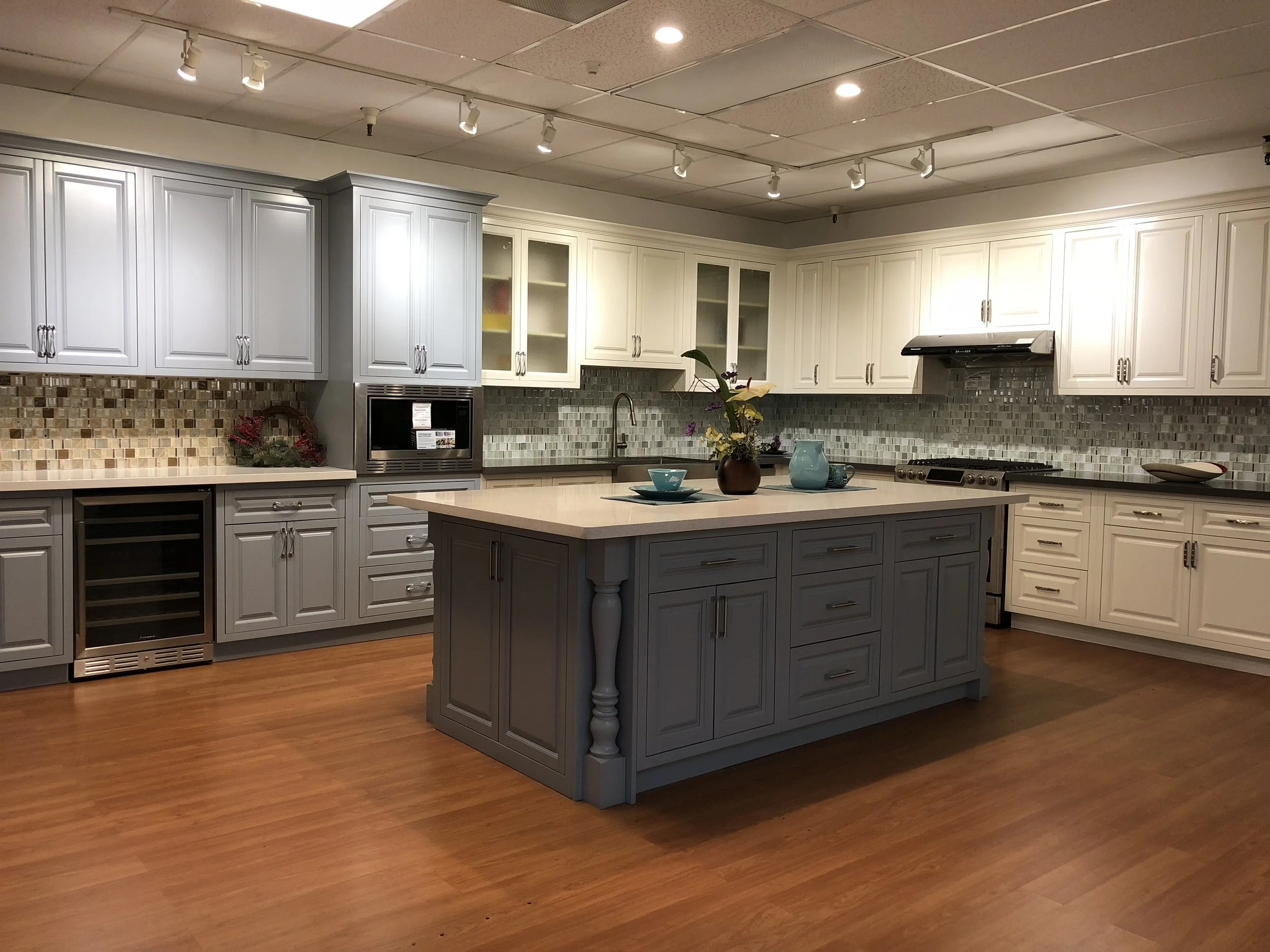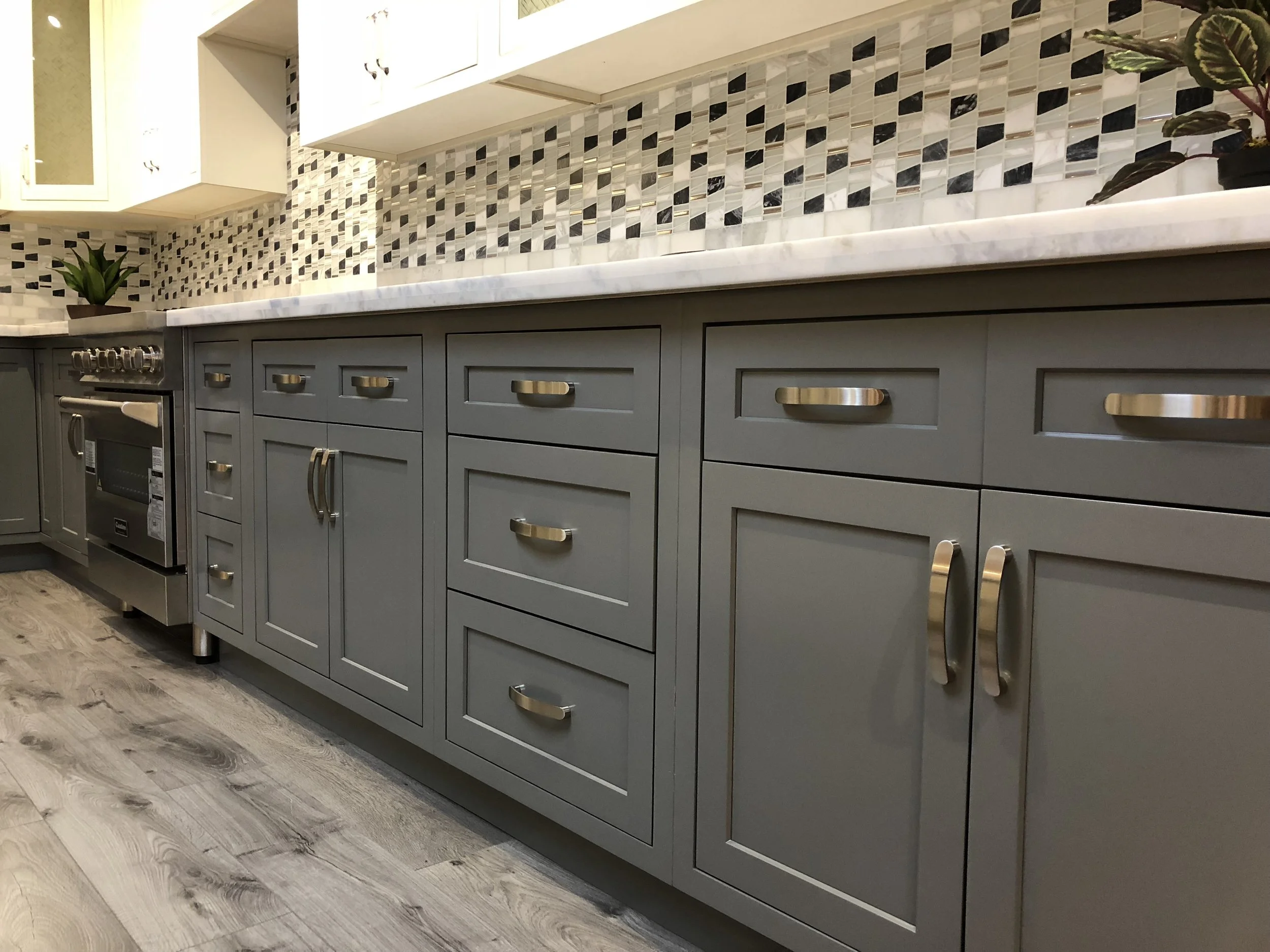How to handle choosing cabinet handles
Cabinet handles might seem like a tiny aspect of your home’s interior design, but the small details pack a big punch when it comes to pulling a room together! The handles you choose for your cabinets will influence both the aesthetics and the functionality of your new space.
In this guide, we’ll cover the major types of cabinet handles, what features you can expect from them, and some tips on what types of designs they can fit well into. Scroll all the way down for a measurement guide and a short description of common materials used for making cabinet handles!
So, where should you put your cabinet handles, and why are they so important?
The handles on your cabinets protect their finish from stains and smudges, which might develop with frequent contact in places like kitchens and bathrooms. They also make it easier to open doors and drawers that don’t have hidden handles or raised edges. Besides providing functionality, they also serve as accessories for your space, accenting your interior design and adding decorative interest to your cabinets and drawers. When choosing the size, shape, and style of cabinet handles, these are three major types to look out for:
Handle Types
Knobs: classic and versatile
Knobs are the classic rounded cabinet handle. With a small gap between the largest part and the cabinet or drawer surface it’s attached to, knobs fit comfortably into one hand for easy grip. They are also incredibly versatile, coming in a virtually infinite range of colors, styles, and materials. Knobs are a great choice for lighter cabinet doors and small drawers.
No matter what type of design you’re looking for, there’s a knob handle to fit it. Sleek metal brings out the “modern” in a modern kitchen, carved wood adds detail and character to a rustic look, and vibrant glass or plastic in fun shapes offers whimsy and pop to a playful space.
Cup pulls: vintage charm
Cup pulls, sometimes also called bin or half-moon pulls, are named for their unique shape, which resembles a cup. They fit easily in the hand and are especially popular for drawers. When choosing cup pulls, measure them carefully and make sure that your hand or fingers will fit comfortably in the cup. Larger cups will offer a better grip if the door or drawer is heavy or hard to pull.
Often found in vintage or rustic designs, cup pulls are the cherry on top for a warm, nostalgic style. Also try brushed nickel or stainless steel for a sharp, clean look, and brass for a bit of eye-catching light! Cup pulls are often available with either plain smooth surfaces or beautiful patterns.
Bar pulls: clean simplicity
Bar pulls are long, straight handles, often with simple and clean designs. They offer more surface area to grip than knobs, and are often preferred for drawers or any heavy loads. Bar pulls also come in a variety of sizes, so measuring out the face of your cabinet door or drawers helps when looking for the right handles.
Stylish, minimalist, and modern, pulls provide more surface area than knobs and are especially suitable on drawers or larger doors. Bar pulls are frequently made of metal, but that doesn’t limit the variety of looks available! Brass, bronze, brushed nickel, stainless steel, and copper are all on the table (or the cabinet door) for this style of pull.
Measurements
When shopping for cabinet handles, there are a few types of measurements to take note of. Getting the width and length of both the door and the handle are the first step – these measurements help you choose a handle that is proportionate to the size of the cabinet door.
The distance that the handle stands out from the door, or the depth, is the projection. This number is particularly important if a door swings toward another object, or if you find a handle with a larger projection easier to grip.
If you’re looking for replacement handles, the center-to-center measurement is especially valuable. This measurement is the distance between the centers of the screw holes used to mount a handle. Making sure the center-to-center measurements of the new handle and the pre-drilled holes in the cabinet allows a quick and accurate installation.
Materials and finishes
Of course, material is just as important as style. Choosing the material of your cabinet handles depends on the design theme you are working with, the durability and quality of the material, and personal preference. Here’s a list of common materials for cabinet handles:
Metals
Brass: Brass handles are chosen for their warm golden hues and may range from polished to aged. Whether polished to a shine or allowed to develop a patina, brass handles bring a rich sense of character to any space. They are also durable, resisting corrosion and tarnishing, so they are suitable for situations that may result in contact with water like kitchens and bathrooms. Brass is a popular choice for a variety of classic styles, including traditional, rustic, and farmhouse.
Bronze: Bronze ranges in color from reddish-brown to dark brown and is highly sought after for its antique appeal. Like brass, it is durable and corrosion-resistant, and can develop a beautiful patina over time. Bronze handles are often used in traditional, rustic, and vintage designs, where they add depth and character to the space.
Copper: Copper has a distinct reddish-brown color that stands out from the crowd, offering a warm and inviting appearance. It develops a patina and tarnishes more than some other metals, so regular maintenance is advised to keep copper looking its best. Traditional, rustic, and vintage-themed spaces are the top choices for copper handles.
Stainless steel: Stainless steel is silver in color, and often comes in a polished or brushed finish. It is extremely resistant to corrosion, staining, and rust, making it ideal for environments like kitchens and bathrooms. Many modern and contemporary designs feature stainless steel handles and hardware, making use of the material’s high durability and clean, shining appearance.
Aluminum: Aluminum is silver or gray and frequently has a matte or a brushed finish. Lightweight, resistant to corrosion, and useful in both indoor and outdoor spaces, aluminum is well suited to a wide range of environments. In interior design, it is popular for contemporary and industrial spaces.
Nickel: Silver to gray in appearance, nickel comes in a range of finishes. It is resistant to corrosion and tarnish, making it suitable for many environments. Most often polished, brushed, or satin-finished, nickel is a great choice for both traditional and contemporary designs.
Wood
Oak: Oak often features a distinct grain and a warm golden-brown color. Durable and versatile, it works well with traditional, rustic, farmhouse, and sometimes modern designs.
Hickory: A hardwood with strong grain and a light or medium color, hickory is durable and associated with rustic or country-style rooms.
Maple: This wood typically has a lighter color and a consistent, fine grain. Standing up to denting and wear, it is suitable for themes from modern to traditional.
Walnut: With a dark, rich color and a distinct grain, walnut offers a luxurious look and depth to both contemporary and traditional spaces.
Cherry: Cherry wood is richly reddish-brown and may darken over time. With its distinct color, cherry wood is a great choice for adding character to a space.
Teak: A tropical hardwood, teak has a rich brown color and great durability. Popular in coastal and nautical designs, it also boasts resistance to moisture.
Others
Glass: Delicate and beautiful, glass handles can be found in almost any color and style imaginable. Depending on their appearance, glass handles can bring elegance and luxury or brightness and whimsy to a space.
Acrylic or Plastic: These materials are light, versatile, and can fit into a range of modern and contemporary designs. They’re also easy to clean and resistant to both moisture and fading!
Ceramic: For a burst of color and a vintage charm, try ceramic handles! They can be found in a wide range of colors and styles as well.
Natural Stone and Leather: Leather accents and stones like marble or granite make a space feel luxurious and unique. Beautiful and unique, these natural materials guarantee a look that can’t be copied.
Have a design theme in mind? There’s a cabinet handle for you. The perfect balance between utility, aesthetics, and comfort, the right cabinet handle does much more than help you open a box. It can be an elegant accent to your living room, a playful pop of color in a child’s room, a convenient helper in your kitchen, and a tasteful accessory to a standing closet.
Making sure you have the right match, both in appearance and in quality, elevates your space. Want a second opinion? Make an appointment with our design experts here at DodiHome, and we’ll help you pick the perfect pairing for your cabinets!



